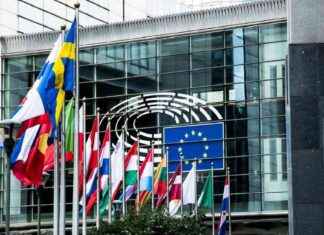A small Japanese town near Mount Fuji has decided to erect a fence to stop the influx of foreign tourists at a popular spot for photographing the famous volcano. The city of Fujikawaguchiko plans to begin the construction of a mesh net 2.5 meters high and 20 meters long next week.
“It is regrettable that we are forced to do this because some tourists do not respect the rules,” one of the city officials explained to Agence France-Presse (AFP) on Friday April 26. The latter notably complained about waste left by tourists or even violations of the highway code.
This is the latest radical decision taken in Japan to fight against the effects of overtourism, after the ban on taking photos in the geisha district in Kyoto (West), or the paid and limited access to Mount Fuji from summer 2024.
More than three million foreign visitors entered Japan in March, a record for the country, which had long been closed to international tourism during the Covid-19 epidemic.
5 euro tax in Venice
Mount Fuji, the highest peak in Japan (3,776 meters), can be photographed from many places, in Fujikawaguchiko or elsewhere. But the viewpoint which will be obstructed is particularly sought after by certain tourists because it appears in the background behind a Lawson supermarket, an omnipresent chain in the archipelago. Because of this visual juxtaposition, “the reputation of this place, which is very Japanese, has spread on social networks, making it a popular photography location,” explained a city official interviewed by the AFP, who requested anonymity.
After the failure of prevention campaigns, with signs and even security agents, the municipality decided to use major means. This decision also aims to protect a neighboring dental clinic, whose parking lot is stormed and which has even found tourists on its roof, where they had climbed to take photos, according to the city official, who specifies that the measure will be maintained until the situation improves.
The problem of overtourism and its environmental damage led Venice, Italy, to launch its 5-euro entry ticket for day tourists on April 25. These tickets, which are in the form of QR codes sold online or on site, must be presented to controllers stationed in particular on the square in front of the Santa Lucia station, the main access to the city of the Doges. At this stage, however, the experiment remains limited in scope: for 2024, only twenty-nine busy days are affected by this new tax, which will be applied almost every weekend from May to July.






